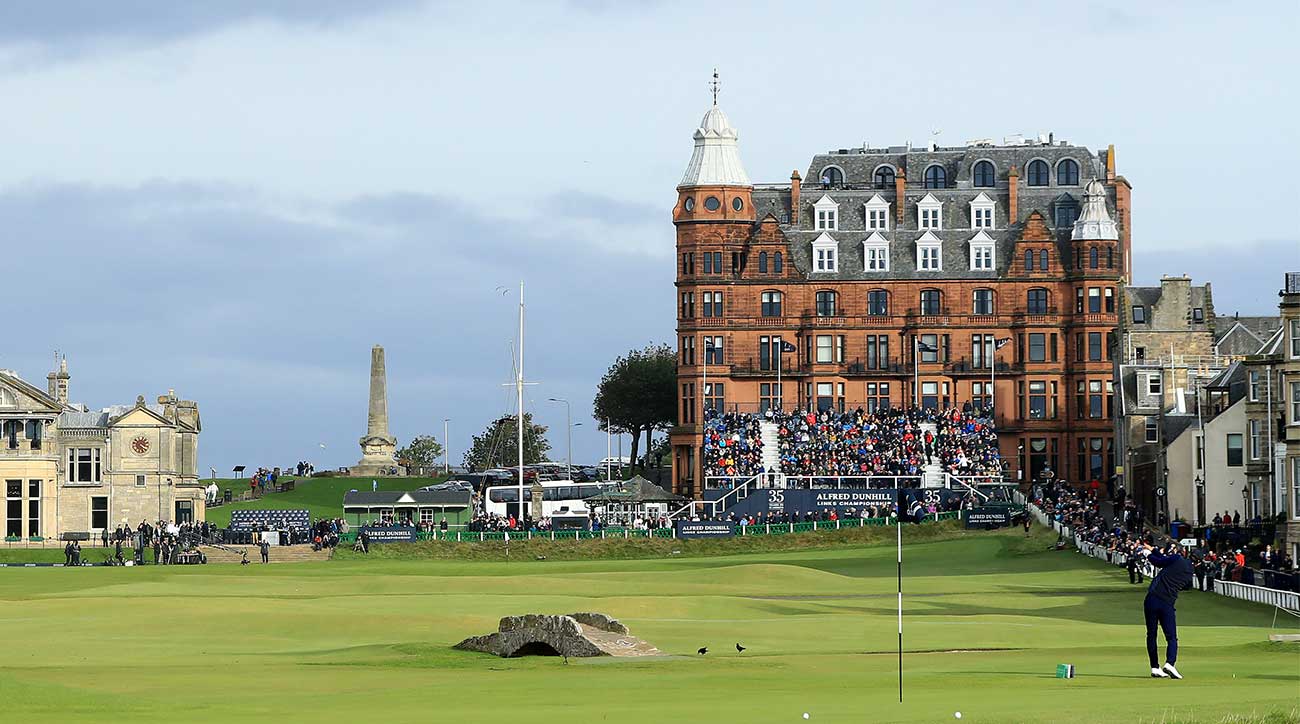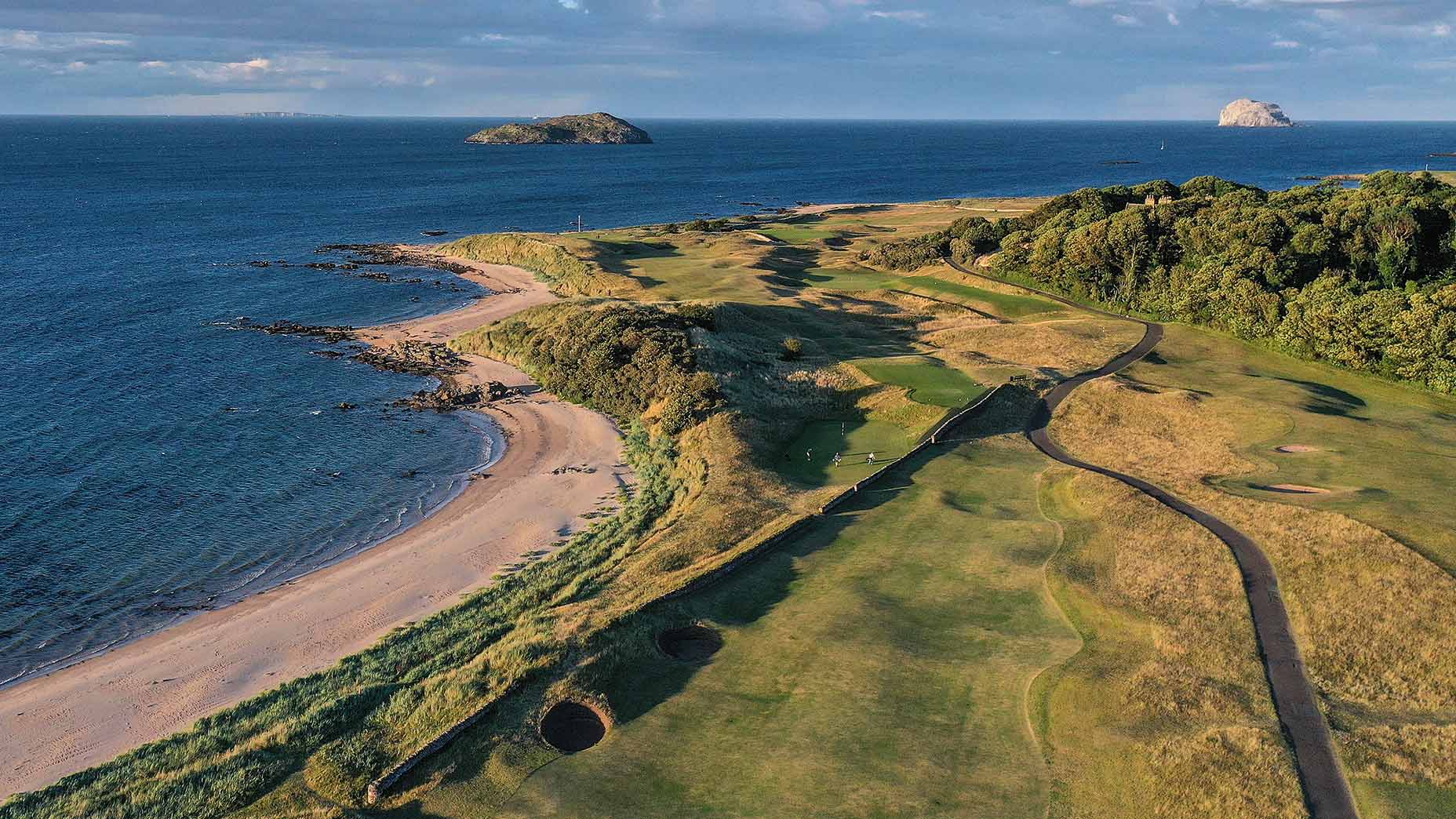He spearheaded an Alister MacKenzie course upgrade. He’s 17 years old
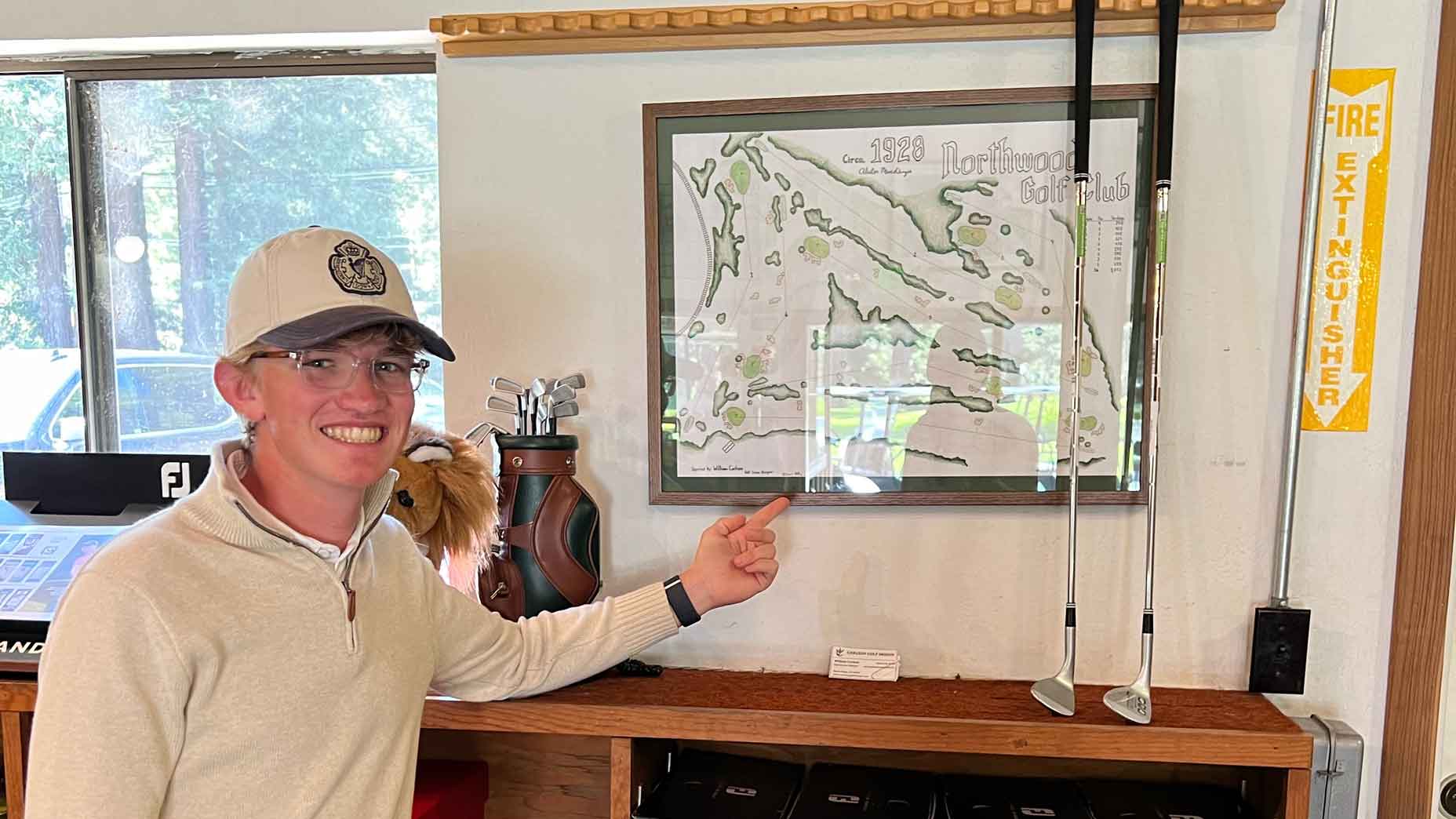
With help from old photos, William Carlson created a map of Northwood Golf Club's original design.
Courtesy Jake Carlson
Every field attracts precocious talents. Golf-course architecture is no different. If you’re passingly acquainted with the profession, you know some of the big names of the modern era. Tom Doak. Gil Hanse. Bill Coore. David McLay Kidd.
Here’s one for your watch list: William Carlson, the Doogie Howser of golf design.
Carlson is 17 and about to graduate from Cardinal Newman High School, in Santa Rosa, Calif., where he lettered for four years on the golf team. He loves the game, but his fondness for it goes hand-in-hand with a fascination for the grounds on which it’s played.
“I’ve always liked the idea of creating something that people get to experience and then react to,” Carlson says. “Seeing those reactions is a powerful thing.”
In recent years, Carlson has entered design competitions and applied for internships at golf architecture firms. A prominent shop responded with an offer that Carlson couldn’t accept as it required a move to Florida; he was 15 at the time.
Nor has Carlson’s work been confined to paper. At Santa Rosa Country Club, where his family belongs, his suggested tweaks to the dog-leg left par-4 13th hole (tee box shifted; trees removed) have been adopted. And then there is the project he wrapped up just this month at Northwood Golf Club, a beloved nine-hole, Golden Age design, tucked into the redwoods of Sonoma County, where Carlson spearheaded a targeted improvement.
That’s right. The teen prodigy helped touch up a MacKenzie.
“He came to us with a very well thought-out idea, and we trusted him with it,” says course manager Gaylord Schaap, whose family has run Northwood for more than 50 years. “It was pretty much, Okay, kid, now show us what you’ve got.”
In the glittery portfolio of Alister MacKenzie, which includes Augusta National and Cypress Point, public-access Northwood is far from the highest-profile course. But it is a darling of design aficionados. Carlson has known of it for more than half his life.
He first played it with his grandparents, in 2015, when he wasn’t yet attuned to the charms of the layout or the history behind it. Cut him some slack. He was still in grade school.
Besides, he got the picture soon enough.
Greater clarity arrived for him in 2020, when lockdowns hit and golf became for Carlson what it was for many: a rare outlet for fresh air and exercise. Northwood was roughly 30 minutes from his house, and, as a junior golfer, he could play it for $5.
The more he looped it, the more he loved it. In 2023, he poured that passion into a research project.
“I decided I would learn everything I could about the course,” Carlson says.
There was plenty to digest. Built in 1928 and opened for play the following year, Northwood sits across the Russian River from the Bohemian Grove, a more than 150-year-old artists’ encampment that marries the free-spiritedness of Woodstock with the blue bloodlines of a tweedy private club. The idea for a nine-hole course in this sylvan setting was initially proposed by Bohemian Grove member and Pebble Beach co-designer, Jack Neville, who encouraged MacKenzie to carry out the work.
In its early years, Northwood went through a turnstile of owners while weathering fallout from the Great Depression. Over the decades, its MacKenzie glow grew dim.
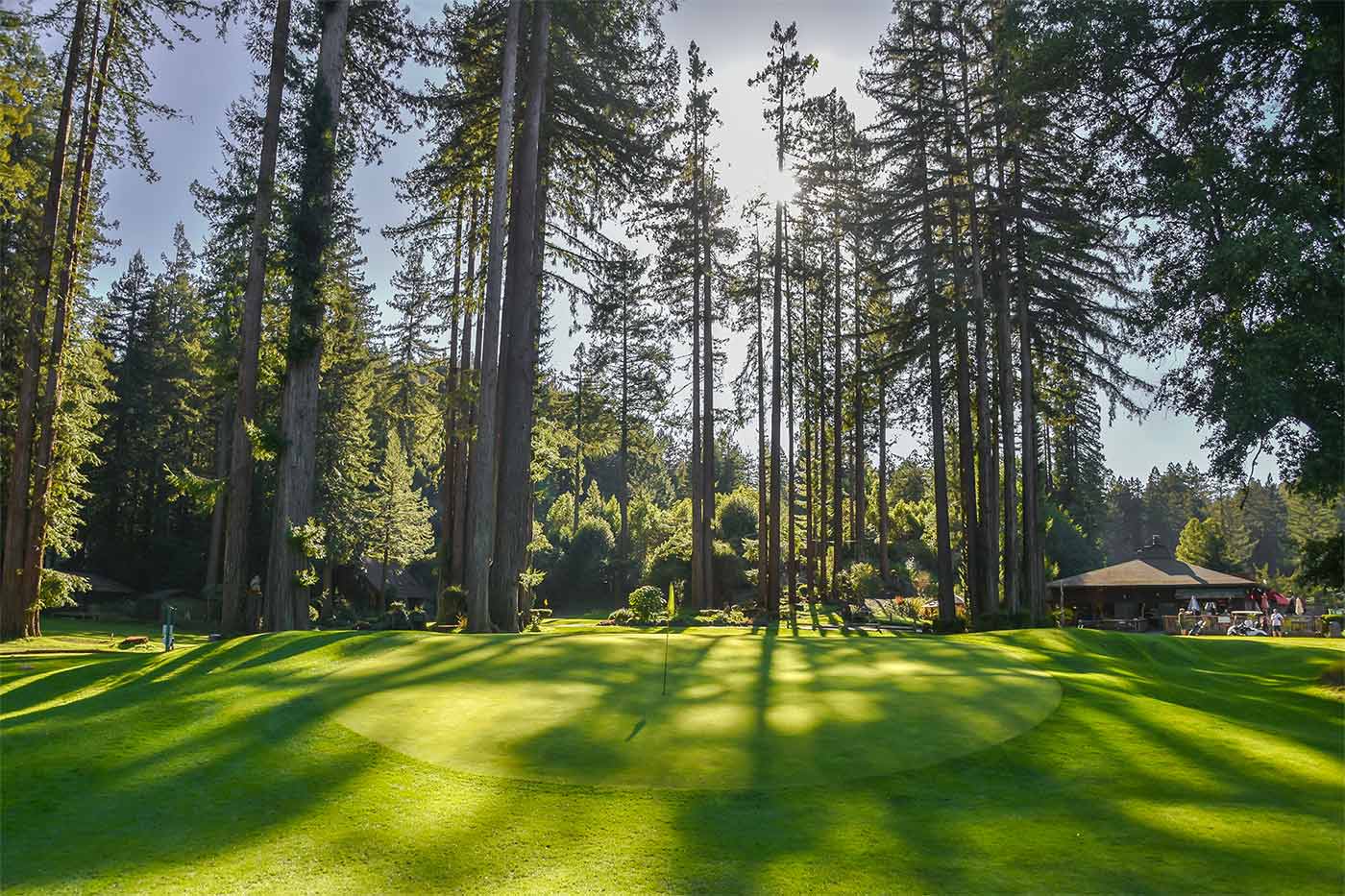
By the time Carlson first saw it, the Schaap family had done much to revive Northwood. But no one could have rightly argued that the course had returned fully to its roots.
Carlson resolved to do some digging.
“I wanted to see what it looked like at the start,” he says.
His task was complicated by the fact that MacKenzie’s original drawings of the course had been consumed by a fire decades before. Carlson leaned instead on old postcards of the property, which the Schaaps provided, along with aerial photos and other imagery that he unearthed in the county archives.
The pieces of a puzzle were coming together. Carlson just needed to give them final shape.
From a very early age, Carlson had displayed an artistic streak. He enjoyed creating board games and drawing imaginary landscapes, a hobby he took up right around the time he learned to hold a crayon. Now, he used those talents to produce a map of Northwood, which he presented to the Schaaps, who in turn displayed it in the Northwood clubhouse, where it became a conversation piece among golfers and staff alike.
For Carlson, though, talk was not enough.
“I’d been eager to do some sort of design project of my own,” he says.
Through his research, he’d discovered that Northwood had once sported around 40 sand bunkers. Only nine remained. The rest had been abandoned, their imprint gone or overgrown.
Rebuilding all of them was not an option. A project of that scope was beyond Carlson’s bandwidth and Northwood’s budget. It would also bog down operations at a busy public course. But a single bunker. That was realistic. In collaboration with Trevor Schaap, Northwood’s superintendent (and Gaylord’s son), Carlson set his sights on the par-4 6th hole, which was missing its original fairway bunker, a slyly situated hazard, 40 yards short of the putting surface, that appeared to sit directly in front of the green.
“We chose it because it is central to the course and would bring a lot of strategy to a previously easy par-4,” Carlson says. “It would also bring back some of MacKenzie’s signature deception.”
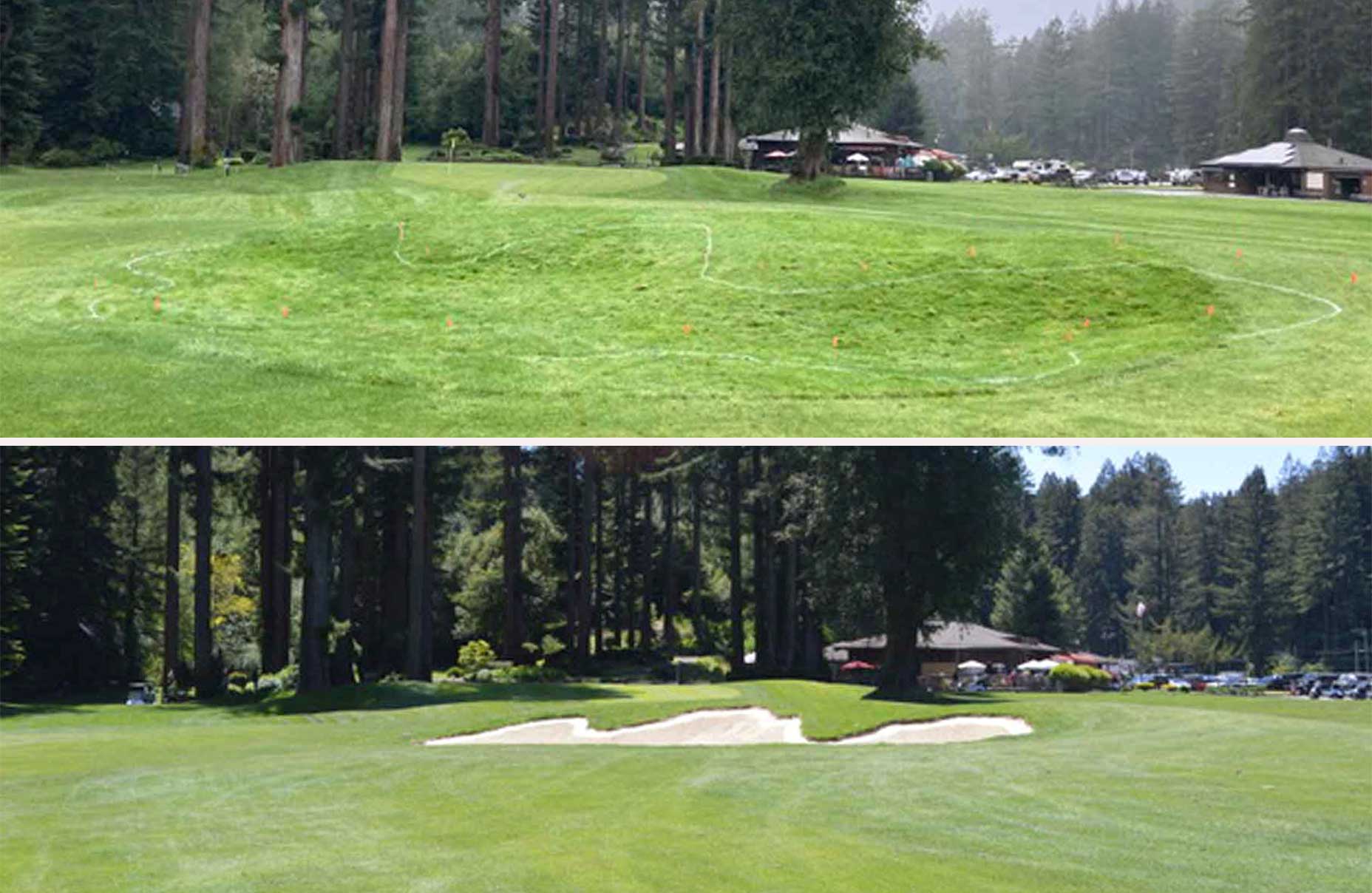
They submitted a proposal and the Northwood board signed off.
Work on the project began in April. Carlson was involved in several phases, painting the bunker’s amoeba-like outline and getting his hands dirty with initial excavation. Schaap and his team handled the bulk of the construction, with Carlson pitching in on the final details. On May 8, the original bunker was back in play.
For Northwood, the project was the perfect starting point, a nice way to test the waters without getting in too deep. Strategic challenge was all well and good, but not if it slowed down play.
“We didn’t want it to backfire on us,” Gaylord Schaap says. “We’re a nine-hole course with two-and-quarter hour rounds. We couldn’t afford to make them two-hour-and-forty-five minute rounds.”
So far, that hasn’t happened. The early feedback, Schaap says, has been buoyant, suggesting that the 6th hole might turn out to be a prelude to further bunker work. Carlson would likely be involved with anything that happens.
In the meantime, though, he’s got plenty on his plate. Every year since 2021, Carlson has submitted for the Ray Haddock Lido Prize, which is awarded by the Alister MacKenzie Society in memory of the architect, whose rise to prominence was propelled by his own victory in a design competition more than a century ago. Carlson has yet to win, but this year’s results are expected any day.
Whatever transpires on that front, Carlson knows what’s next. This fall, he starts college at California Polytechnic State University, in San Luis Obispo, where he plans to major in landscape architecture. The future lies before him, a reachable par-5 filled with promise. And the draw of the Golden Age notwithstanding, there’s no looking back.



